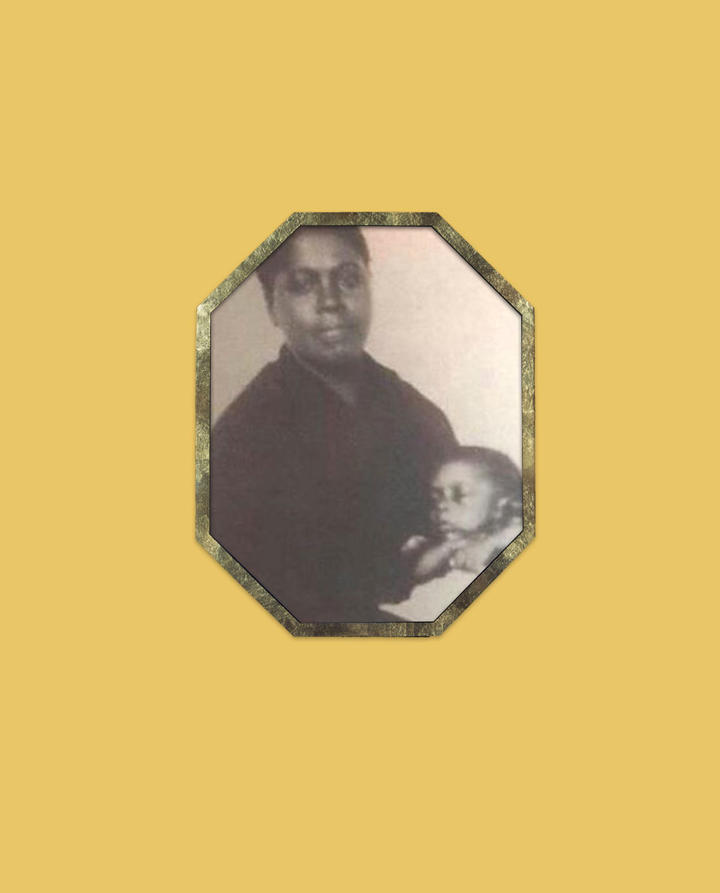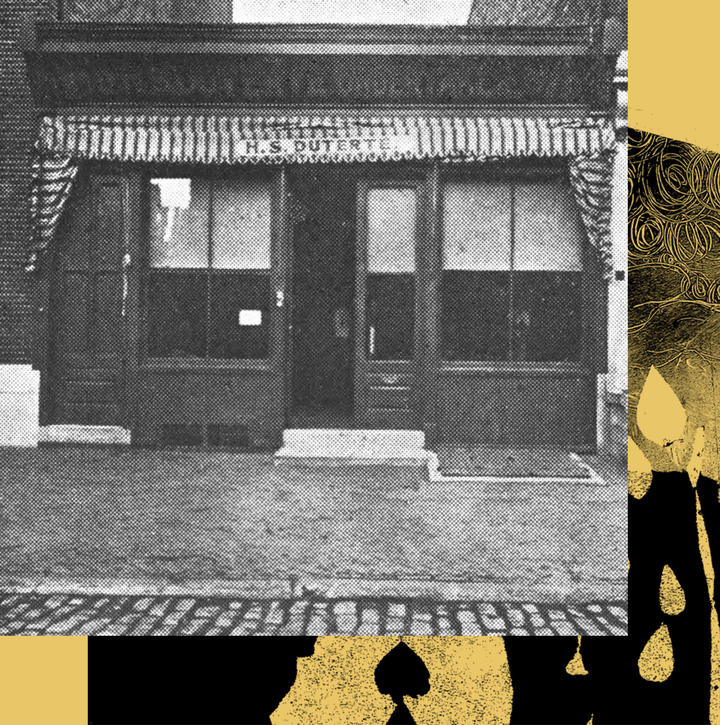11–13–2017
Escape Through Death
When the Underground Railroad was one
of the few lifelines available to those
fleeing slavery, undertaker Henrietta Duterte
smuggled fugitives through Philadelphia
in coffins. Kaitlyn Greenidge tells the story.
By Kaitlyn Greenidge
At 14, my deepest desire was to become an undertaker. This career choice was met with puzzled looks from my mother and exasperated sighs from my guidance counselor, but during a school-sponsored internship week, they agreed to let me try.
My mother knew the owners of one of the oldest black-run funeral homes in Boston. As she looked up their number in her Rolodex, she casually mentioned going to dance parties in the funeral parlor as a teenager. “Really?” I asked, incredulous, once again outclassed and outcooled by my mother. “Yeah,” she shrugged. She told me, too, about how as a kid traveling to Virginia every summer to visit cousins, her family would stop at a black funeral home in New Jersey. When traveling across state lines, it was the only safe space where they could sleep. She told me how these friends, the owners of the parlor, would delight in making her and her siblings sleep in the same room as the caskets. I imagined her on a late spring night, running her fingers over the satin insides of a casket just for the thrill of it.
I didn’t know then about Henrietta Duterte, who, in 1858, turned her home into a stop on the Underground Railroad, using coffins to smuggle fugitives across Pennsylvania. I also hadn’t yet learned about the complicated relationship between death, funeral rites, and blackness. To be able to determine when and how to bury and mourn your dead is an act of autonomy and self-expression for a community that is denied personhood by the larger civic and social systems at every turn. Because segregation in the United States runs even into the grave, black-owned funeral homes have often been the only places black people could turn to when burying their dead.
“It is not so strange to use whatever means you have at hand—a postal box; a fake mustache, top hat, and cane; a coffin and a funeral procession—to ensure freedom for those around you.”
I did not get my internship at the funeral home. In Massachusetts, you had to be 16 or older to work in one. By the time I reached that age, I had downgraded my goal to simply being as goth as possible. But it’s difficult to fully commit to a subculture look like that when you don’t have any money. The most I could afford was an overpriced black tutu from Urban Outfitters (a time before cheap Internet retail existed), which I conveniently wore as both a petticoat and a face veil.
By adulthood, I’d mercifully left that fashion stage behind. By that point I had also, buoyed in part by the stories of my mother and her family, become interested in black history. Working on an oral history project, I was tasked with interviewing older black women about their lives growing up in Brooklyn in the early 20th century. “And when did your father die?” I would ask, and be meant with a look, as if I had just used an obscenity. I learned to say, instead, “When did he pass?” Passing, home going, passing over, resting in power—these were the preferred terms, a nod to a very, very old understanding of death that is distinctly African: that death is not an end, but merely another part of a journey to a space that is not so black and white as heaven or hell, but something much more mysterious.
For enslaved people, the journey from life to death was often a way to talk about freedom, about liberation, in metaphor. It was a journey they knew intimately. The parallels are most striking in the story of Henrietta Duterte—a daring woman who used her undertaking business to smuggle escaped slaves to freedom as part of the Underground Railroad. The image of Duterte hiding fugitives in coffins is an enduring one—the provocative connection of life and death, the question of liberation, and the idea of great transformation coming from what, to the outside world, appears to be a moment of lowest tragedy. How I wish I’d known about Duterte as a teenager—she would surely have become my lifelong heroine.
Duterte was born, in 1817, into a prominent black Philadelphia family. She grew up in Philadelphia’s celebrated Seventh Ward, the heart of the city’s free black community. The world Duterte inhabited was one that we would now describe with that ubiquitous Internet phrase: Black Excellence. W.E.B. Dubois made the community famous with one of his first studies, The Philadelphia Negro, a groundbreaking work of sociology that argued for the city’s black population’s self-sufficiency and many achievements. An even earlier chronicler, who probably would have known Duterte and her family, Joseph Wilson, wrote a book about black Philadelphia in 1841. He called it, simply, The Elite of Our People.

The only existing photo of Henrietta Duterte © Public Domain
“I like to think I would have been as brave as Duterte, to put my business and my life at risk in order to save others.”
In this setting, Duterte began her professional life as a tailor and was known for her cloaks, hats, and attire—which at least one source claims were considered fashionable. In 1852, at the age of 35, she married Francis A. Duterte, a Haitian-American who owned his own undertaking business. None of their children survived infancy, and Francis himself died in 1858, after just six years of marriage. In the only photograph of Duterte that has survived, she is pictured cradling one of her children, the baby’s eyes closed in sleep, or maybe death. Her expression is both proud and formidable—you can almost see a hint of a smile. Her gaze is so direct; the photo appears almost modern in its frankness and straightforward expression.
At age 41, Duterte had no husband and no children—but she did have a business. She took over the funeral parlor, growing it into a highly successful endeavor. According to most accounts, she was known for being an excellent and fast undertaker. This was an important detail in a world in which embalming techniques were not yet developed and the precariousness of life meant that death could come suddenly and without warning. Duterte’s business success meant that she was also instrumental in fund-raising for the community that surrounded her. She supported the AME Church of St. Thomas; the Philadelphia Home for Aged and Infirm Colored Persons; and, after the Civil War, the Freedman’s Aid Society, which supported formerly enslaved people in Tennessee. When she died in 1903, her business was so successful that it was grossing about $8,000 a year (about $211,500 in today’s dollars).
Duterte was uniquely situated to connect her business to the Underground Railroad. Philadelphia was part of the Metropolitan Corridor, a network of vigilance committees—formalized groups of organized black activists who smuggled fugitives to the north. Most of those escaping slavery for the north came from the border Southern states—Maryland, Delaware, and Virginia. Though the methods for escape varied, the vast majority came by land. Some, like the most famous fugitive, Frederick Douglass, escaped by painstakingly saving up enough money for train and ferry tickets, riding alongside white passengers and tensely hoping not to be discovered.
But Philadelphia became famous for being the final destination for the most daring fugitive escapes. In 1849, 33-year-old Henry “Box” Brown shipped himself in a wooden crate from Virginia to abolitionists in Philadelphia. And a year prior, in 1848, Ellen and William Craft escaped from Macon, Georgia. Ellen, an enslaved woman of mixed race, managed to pass as a white male plantation owner while her husband posed as her slave. In this context, Duterte’s funeral parlor/Underground Railroad stop makes complete sense. It is not so strange to use whatever means you have at hand—a postal box; a fake moustache, top hat, and cane; a coffin and a funeral procession—to ensure freedom for yourself and those you love.
The image of using funeral processions and coffins to smuggle enslaved people into and out of the city becomes even more poignant when set to the soundtrack of the spirituals of the time. These songs served to describe the experiences of black people, free and enslaved, and to communicate passcodes for the Underground Railroad. Lyrics like “Before I’ll be a slave, I’ll be buried in my grave”; “Over my head, I hear music in the air”; and “Dem bones gonna rise again” all take on a meaning both despairing and hopeful. The theologian Howard Thurman, in describing these songs, wrote, “Death is regarded as release, as complete surcease from anxiety and care. This is to be distinguished from that which may come after death. We are thinking here of the significance of death regarded somewhat as a good in itself. The meaning of death in such a view is measured strictly against the background of immediate life experience. It is not a renunciation of life because its terms have been refused, but an exulting sigh of sheer release from a very wearying burden.”

Henrietta Duterte’s place of business © Public Domain
Like many Americans, when I first learned about slavery and the Underground Railroad, I flattered myself by believing that I would have had the courage to resist, the determination and the faith to fight to end slavery by any means necessary. I like to think I would have been as brave as Duterte, to put my business and my life at risk in order to save others. I love the Harriet Tubman legend that she traveled with a pistol to protect herself from slave catchers and also to encourage those who momentarily lost faith to keep going. She would supposedly cock her pistol to those who quailed and say, “Dead negroes tell no tales.”
I imagine that in every coffin Henrietta moved, there were similar moments of very real terror, doubt, and resignation. They are a part of any path toward liberation, especially in a world that conspires to make sure you stay unfree. Knowing this reminds me that I am not exceptional in my moments of fear or hesitation. Many more who’ve passed before me have had them too.
I am continually surprised by the ingenuity of our ancestors and their ability to take the fewest possible resources and create a living thing. We can take death and use it to save lives. From our limited resources, whole realms of art, of culture, of music, of literature, of language have sprung forth, ones so rich and valuable that people all over the world try to steal them—including, especially, the very people who make it a point of telling us we are useless. Your living neighbors won’t give you a place at the inn. No matter. You will sleep among the graves of your kinfolk and dream up another possibility, one your antagonists never, ever, could conceive as possible.
+++++++++++
KAITLYN GREENIDGE is the author of We Love You, Charlie Freeman
Video produced by Mighty Oak. Emily Collins, creative director; Jess Peterson, creative producer; Anthony Galante, storyboards/animation director/animator; Minkyung Chung, Sami Kerwin, Anthony Galante, fabricators; Marisha Falkovich, post FX.
>via: https://damnjoan.com/henrietta
